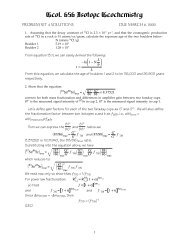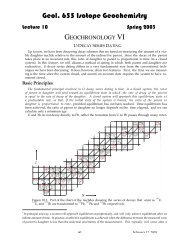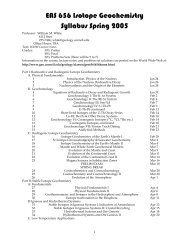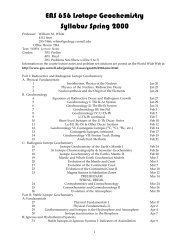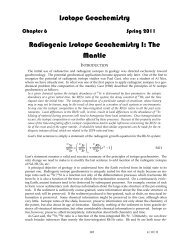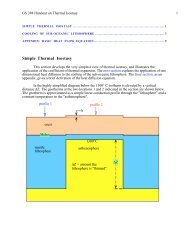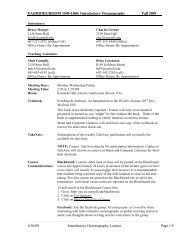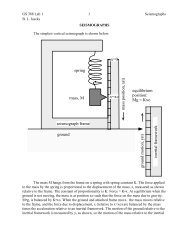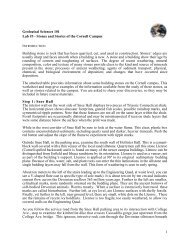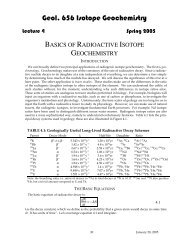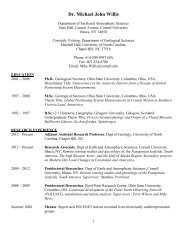Mahowald et al 2006
Mahowald et al 2006
Mahowald et al 2006
You also want an ePaper? Increase the reach of your titles
YUMPU automatically turns print PDFs into web optimized ePapers that Google loves.
model and other models are discussed in Yoshioka <strong>et</strong> <strong>al</strong>. [submitted]. The sensitivity ofdust feedback results to optic<strong>al</strong> properties is explored in Miller <strong>et</strong> <strong>al</strong>. [2004]. Theseresults will ignore the impact of dust radiation on changes in ocean circulation, since weuse a slab ocean model. We explore the efficacy of dust forcing within our model in theonline supplement.In the last glaci<strong>al</strong> maximum, our results suggest a radiative forcing relativ<strong>et</strong>o the current climate of –1.04 W/m 2 at the top of atmosphere, for the case includingglaciogenic sources and best matches available deposition observations. Compared to theforcings from carbon dioxide (-1.7 W/m 2 ) and insolation and <strong>al</strong>bedo (-5.2 W/m 2 ) [e.g.Hewitt and Mitchell, 1997], the dust forcings are about 15% of the tot<strong>al</strong> of other forcings.The surface temperature response from dust is –0.85 ºC relative to the current climate,while the changes in carbon dioxide, insolation and <strong>al</strong>bedo in the same simulations causea change in surface temperature of 5.6 ºC.Despite the possible sensitivity of the results to our model specifications, ourresults suggest some interesting relationships across the different climate studies.Radiative forcing at the top-of-atmosphere and surface is linear with aerosol optic<strong>al</strong>depth, even in different climates. Climate response in surface temperature andprecipitation are roughly linear with aerosol optic<strong>al</strong> depth in our model, with a decreasein both surface temperature and precipitation associated with increasing optic<strong>al</strong> depth.Fin<strong>al</strong>ly, our model predicts statistic<strong>al</strong>ly significant decreases in temperature at manylatitudes (not just close to the dust sources) when dust is added in the different climates,and a shift in precipitation from the northern part of the ITCZ to the southern part of theITCZ.



